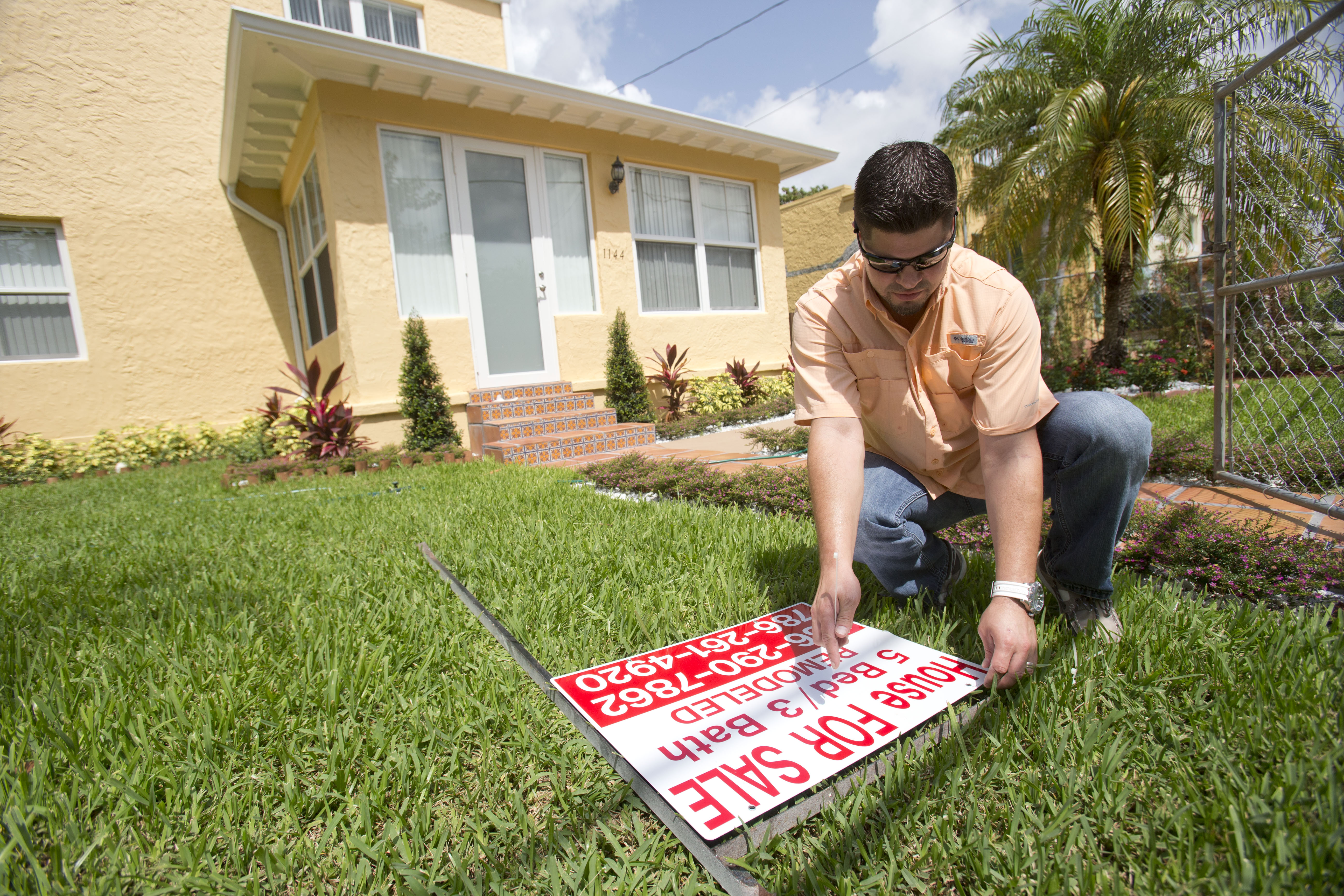24/7 Wall St. analyzed several of the pitfalls owners should know about and that meticulous buyers can discover.
All states have mandatory disclosure laws that require home sellers to disclose any material property defect. In some cases, the sellers may not be aware of a defect they have lived with for years and are not trying to hide the issues. There may be problems that existed before the current owner bought the home or that were added inadvertently as a property was altered. Failing to disclose these can lead to lawsuits when the defects are eventually found. Material defects regulations can vary from state to state, which can further complicate the process of purchasing of a new home.
Most home buyers and home sellers are likely to pay the few hundred dollars for a home inspection, which can save both parties money and grief later. This is particularly true for older homes. Still, even good house inspectors have limits to what they can inspect. Often, they are unable to check inside or under the structure and are restricted to what they can see or reach. Not many buyers or sellers opt for a more thorough inspection, which is much more expensive and time-consuming.
Material defects in a house that can affect the sale price substantially, or even be deal breakers. They often involve water issues such as old pipes, as well as hazardous materials and structural problems, but are hardly limited to that
When asked to name some of the problems, a home inspector might or might not find on a property that could cause a buyer to refuse to go through with the purchase, Frank Lesh, executive director at the American Society of Home Inspectors (ASHI), said, "A severe structural problem. For example, leaning or cracked foundation, excessive mold, or water damage."
Nick Gromicko, founder of the International Association of Certified Home Inspectors (InterNACHI) told 24/7 Wall St. that about one-quarter of the home inspection industry is related to testing for mold because it can cause such serious health problems. "Mold is a health issue which many young families wish to avoid. There is sometimes a feeling that mold will never go away," added Lesh.
Here then are 5 problems that may make selling a house either more difficult or even impossible.
1. Mold
Black mold is a potential environmental problem that will scare off buyers quicker than just about any other problem. If the mold is not visible but dampness in the walls, floors, or ceilings is apparent, then mold of some kind is almost certainly growing. In most cases, getting rid of mold is far more costly than preventing moisture from attacking the lumber, sheetrock, ceiling tiles and other wood products that mold spores love. Some molds are toxic, and even those that are not may cause allergic reactions in some people.
A professional mold inspection gives the seller a signed report from before the house is listed for sale. Buyers may choose to conduct their own testing as well, but at least the seller has a better chance of completing a sale with a satisfactory mold report. However, unlike leaded paint, there are no federal regulations for mold inspections or remediation. In 2012, Virginia rescinded legislation regulating licensing for mold inspection and remediation after just one year in effect due to the lack of federal standards.
2. Stigmatized property
Stigmatized properties belong to a broad category of houses and apartments that have been the scene of a suicide, murder, cult activity and so on, or that have been associated with other misfortunes or crimes — even ghosts. In most states, buyers are responsible to spot a stigmatized property. However, if a potential buyer asks about any stigmas attached to the property, home sellers are generally better off disclosing all they know about the property. While sellers may lose the sale if they disclose it all, they could end up in court if they don't. Regulations vary widely among states. In California, for example, state law requires disclosures of murders and suicides on the property and any death within the past three years, except in the case of AIDS-related deaths. But Tennessee, Colorado, Pennsylvania and many others have no such requirement at all.
A study of 100 stigmatized homes in 2000 indicated that stigmatized homes sold for an average of just 3% less than comparable listings but stayed on the market 45% longer. That is not always true, however. The condo where Nicole Simpson and Ron Goldman were murdered in 1994 sold for $200,000 less than the price Simpson paid for it. Some stigmatized properties have been demolished rather than put up for sale, or demolished and reappeared as a new house with a different address at the same location. But nothing compares with the danger of buying a former meth house, Nick Gromicko of InterNACHI pointed out. It makes people sick and if a later inspection finds that the house was used as a meth lab, the house is usually destroyed.
While a radon test costs about $150 and remediation costs about $1,000, Gromicko explained, a test for meth costs about $450 but could save the buyer the entire price of the house or tens of thousands of dollars in remediation costs.
What about a crazy neighbor? The National Association of Realtors has cited a case in Texas where the sellers were forced to repurchase the house they had sold because they failed to disclose that the next-door neighbor often left her house naked and cursing loudly.
Gromicko told us that undesirable neighbors are the biggest problem for potential home buyers. Sellers are under no disclosure obligation regarding who the neighbors are or how they behave. This is one area where caveat emptor really matters.
Finally, ghosts. In a survey conducted by the National Association of Realtors, more than 60% of respondents to a survey would consider buying a haunted house. The same survey indicated that about 40% of prospective buyers for a haunted house expect to get a discount of up to 30% from the asking price.
3. Polybutylene piping
Millions of U.S. houses built between 1978 and 1995 in all parts of the country used polybutylene piping for the plumbing system. The piping reacts with oxidants in the water, causing the pipes to degrade and, ultimately, leak. Because the water pipe deteriorates from the inside, discovering the defect is often problematic. The problem is apparently worst in treated public water systems. The damage to a house can be severe. If the house has polybutylene pipes, it is not a matter of whether they will fail but of when, according to home listing service Propex.com. If the sellers know of the polybutylene piping, they should disclose the information and be prepared to either fix the plumbing before selling the house, discount the house at least enough to cover the cost, or change their plans to sell the house.
4. Well and septic systems
A septic system treats household sewage on properties not connected to a public sewer system, and a well is a private water source for the property. Septic systems and wells are common in rural areas and can be safe and effective for years if well-maintained. However, a failure in any part of the septic system or a well that runs dry can be expensive to repair.
Because replacing a septic system can run into the thousands of dollars, potential buyers are likely to want to know how well the system works and whether it has been tested recently. The tank should not leak and the drainfield should not have any water puddled on top. Of course, any sewage odor is a sign that the system is not working properly. Replacing the drainfield can cost as much as $20,000, while replacing a leaking tank might cost as much as $2,000.
Many places also have regulations related to the proximity of a house's well to its septic tank or to the property line. These distances vary by state and probably even by county, but a general rule of thumb could be the 100-foot separation between a well and the septic system required by the Federal Housing Administration in order to get an FHA-approved loan to buy the house. The FHA also requires a minimum distance of 10 feet for the septic system from the property line.
5. Zoning
Issues related to zoning could play a role in any house sale. If the buyer wants to build an addition or tear down a part or all of the house and build something else, zoning regulations could kill a deal if such changes are not permitted. Zoning is a local issue, and in an incorporated city there are probably at least two zones — residential and commercial — and sometimes more.
For example, a house that exceeds current zoning ordinances usually got there before the rules were written and is called non-conforming. It cannot be enlarged without getting a variance, and getting a variance is not guaranteed. And that's not all. If the house is more than 50% destroyed by fire or some natural disaster, it cannot be replaced without a variance.
Local governments usually approve changes if the alterations do not change the footprint of the building — for example, adding a floor. Anyone buying a property anywhere should check the zoning to see what conforms and what is allowed. Many people assume they can make changes that are not permitted.
It also pays to check that fences and other improvements are inside the property line. Too often people build right to the setback lines and forget things like air conditioners that can stick out over a neighboring property.
It is also valuable for buyers to check the zoning of all surrounding properties and any variances they have received. In a rural location, for example, lack of zoning could be an issue. Just because someone has not built a pig farm next to your property does not mean they cannot do so.
Homeowner association and subdivision rules are some other regulations that homeowners need to consider. These rules are not established by government but by homeowners, and they can even include restrictions on the color you can paint your house.


